If you want to make more profit with less money, Pearl farming is a great idea for you. People’s attention to this is also increasing rapidly. In this article, we are talking about Pearl farming, which has made many people millionaires. Pearl farming is one of the best aquaculture businesses in India, as Pearls are in great demand in the market. Let’s check out the ways pearl farming make you rich in a short time.
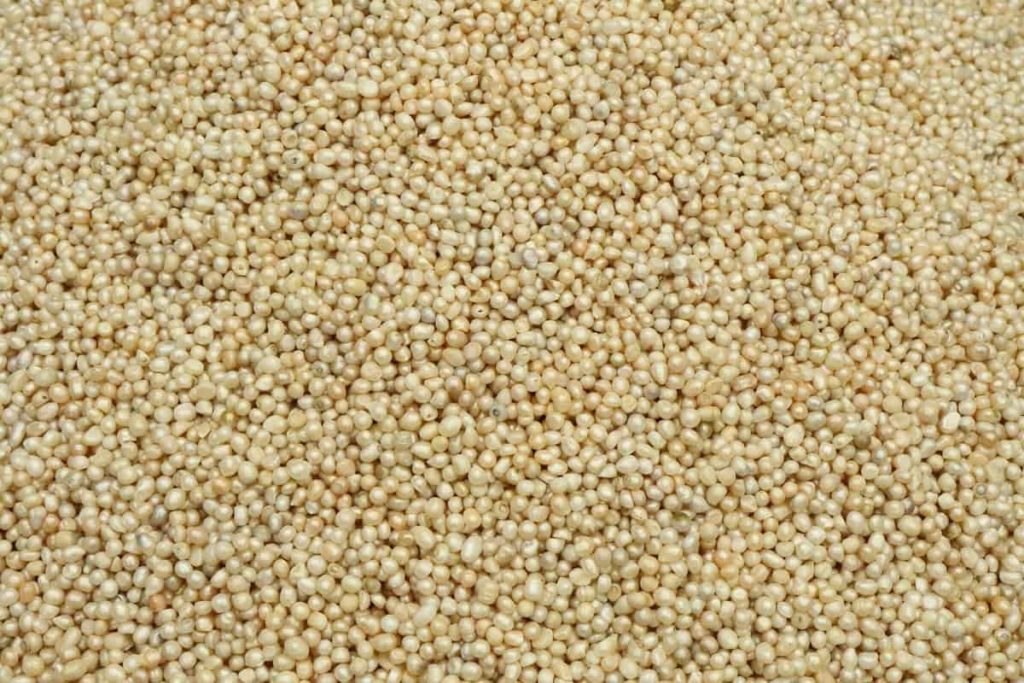
Pearl farming is eco-friendly. As a filter feeder, the oysters purify the water. Pearl farming is practiced in many countries, although there are somewhere it is practiced commercially. The best part about Pearl farming is its profits and income. In recent years, many people have turned to Pearl farming and made a fortune.
From farming to marketing, the Pearl business has provided thousands of livelihoods, and it continues to grow. As long as the jewelry industry is alive, it will provide many jobs to more and more people around the world.
Varieties of Pearl
- Natural Pearls
- Cultured Freshwater Pearl or Freshwater Cultured Pearl
- Keshi Pearl
- Seawater Cultured Pearl (Saltwater)
- Japanese Cultured Pearl
- Cultured Pearl and Mabe Pearl
Which are available in eight types. The eight shapes are round, baroque, button, semi-round, pear, oval, rounded drop, and double bouldered.
Things to keep in mind before starting a Pearl farming business
Of course, like any other business, the Pearl farming business requires your time, effort, interest, some investment, and most importantly patience. You will have to wait about 1-3 years for the first harvest.
At the same time, it is important to consider the following points.
- For Pearl formation, you must have sufficient space
- Knowledge of grafting techniques is required before starting a business.
- Contact retailers in the market to sell your Pearls.
In case you miss this: Pearl Farming Training (Moti) Centers, Institutes In India
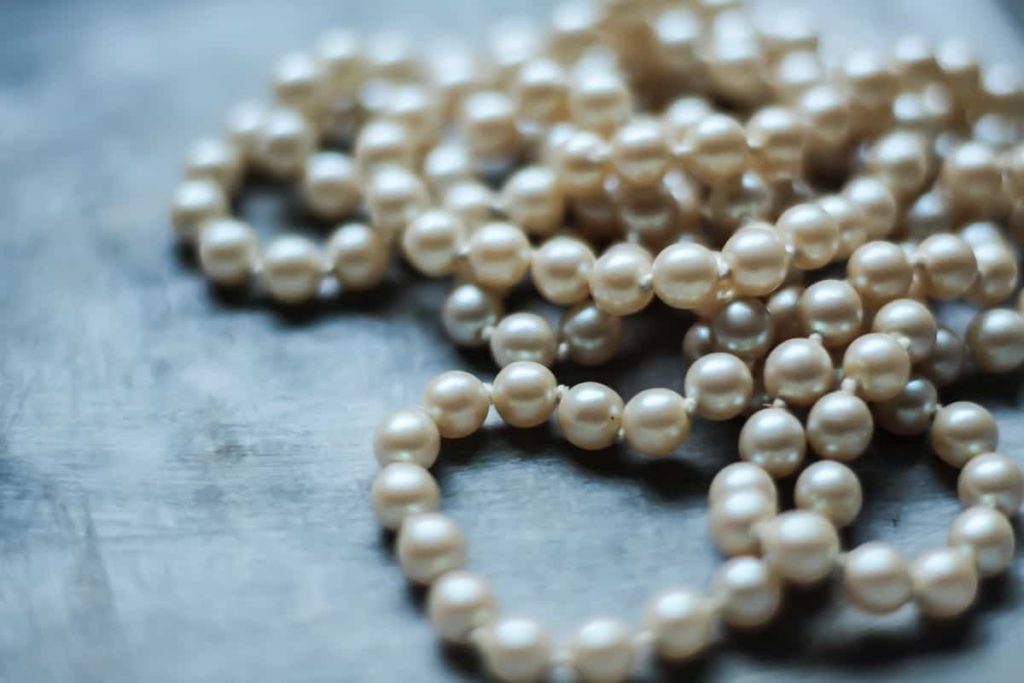
Why is commercial Pearl farming profitable?
Due to the high cost of the final product, Pearl farming is a lucrative business. Although the price of Pearls depends a lot on size and quality. Furthermore, it is a specialized farming business where the final product is lightweight and nonperishable. In addition, this business is also a suitable profession for those who like to work on the water.
And also, those who specialize in boating, diving, and fishing. In addition to the grafting process, Pearl farming is a relatively simple form of aquaculture. Because this business does not require artificial feeds, complex farm structures, or constant attention. However, to be successful in business, you must manage the form properly.
Key points to consider before starting Pearl farming
Framing Pearls takes a long time, sometimes several years with a bigger initial investment and you need to make it a success in the process of Pearl culture and produce high-quality Pearls. Produce high-quality Pearls so that you can earn a bigger profit. The quality of Pearls depends on the size, luster, shape, etc.
One can easily meet the production of his high-quality Pearls under certain conditions, which are listed below.
- First of all, you need a well-known and good source of Pearl’s mollusk or Oyster.
- You also have the proper & sufficient location to make Pearls.
- Because this business requires good start-up capital to invest in your business to set up and operate your Pearl farm.
- You should have a good knowledge of grafting and its technique as it is an important and difficult task in Pearl cultivation.
- And finally, you should contact a reputable retailer in the market so you can sell your Pearl.
Method of freshwater Pearl method
It depends on the internal structure of the shell and the type of Pearl. The whole process of cultivating freshwater Pearls requires modern surgical skills to complete the cultivation, as opposed to cultivating sea Pearls. The quality of Pearls is assessed using a Pearl sorting system based on freshwater Pearl surface, its shape, luster, and the appropriate color in which it is made. This requires help in the production of Pearls, which are easier to cultivate and cheaper than other Pearls, thus increasing the value of freshwater Pearls.
In case you miss this: Frequently Asked Questions About Pearl Farming
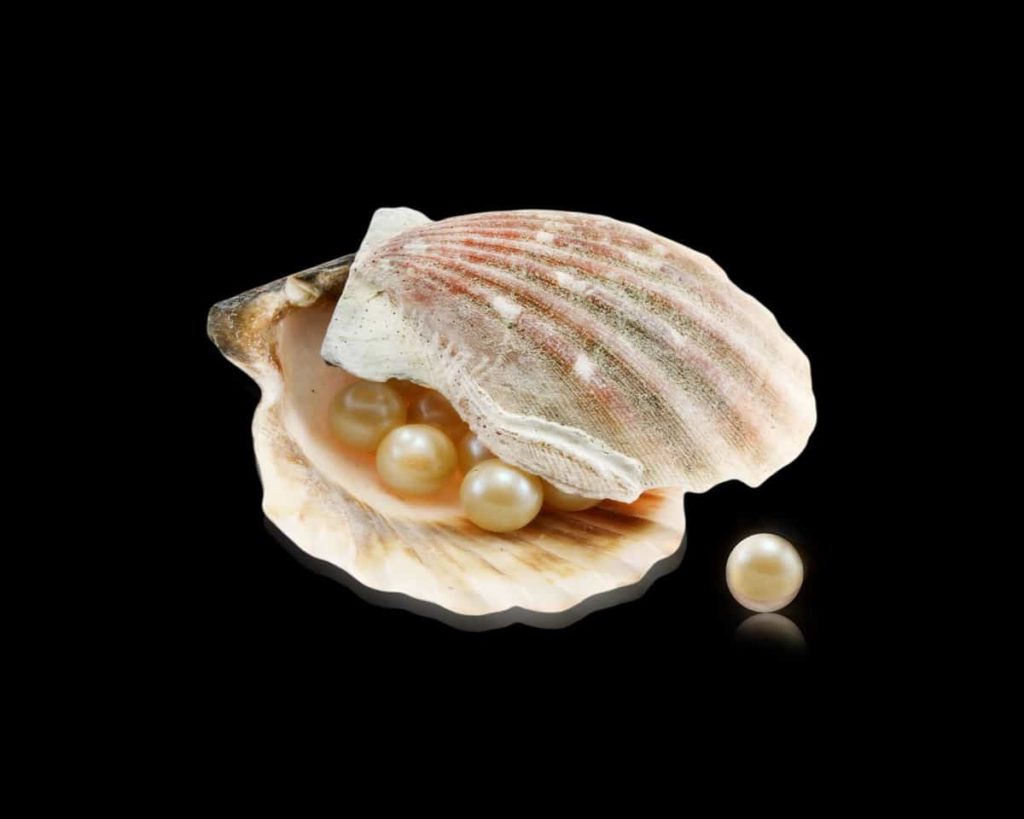
It is the process of growing freshwater cultured Pearls on a farm. Within a time, frame of 2-5 years, the Pearl farmer breeds and cares for thousands of oysters to grow and produce Pearls. It takes both skill and luck to get it off. Pearl farms can be subjected to uncontrollable and unpredictable forces, such as severe storms, water pollution, disease, extreme cold or heat, infections, etc.
Before you can start cultivating Pearls, you should get oysters for nucleate. In the past, this meant fishing for oysters in the ocean. Today, Pearl growers find it easier and more productive to grow their own. All the farmers have to do is collect the oyster eggs and high-quality oysters already present on the farm.
Raising oysters for freshwater Pearl farming
Oyster larvae are kept in controlled conditions. However, they are allowed to swim freely in the water. Once they are a few weeks old, they are transferred to the “wild”. There, they attach themselves to something stable, like a rock. Within the next few months, the larvae will grow into small baby oysters. The collectors are finally sent to collect them. They are then transferred to a separate section of the farm which is used as a “nursery” for little ones.
There, baby oysters are nurtured for about 1-2 years, until they are ready for nucleation based on the size and development of freshwater Pearls. Nucleation is a surgical procedure. A foreign object is planted inside the oyster which makes it irritated. It produces real Pearls, which have the shape of cultured freshwater Pearls and the size of freshwater Pearls.
Cultured Pearls – They are produced by mussel and oyster breeders under controlled conditions using two different groups of mussels, freshwater and river mussels, and saltwater Pearl shells.
In case you miss this: Pearl Farming Project Report, Cost and Profits
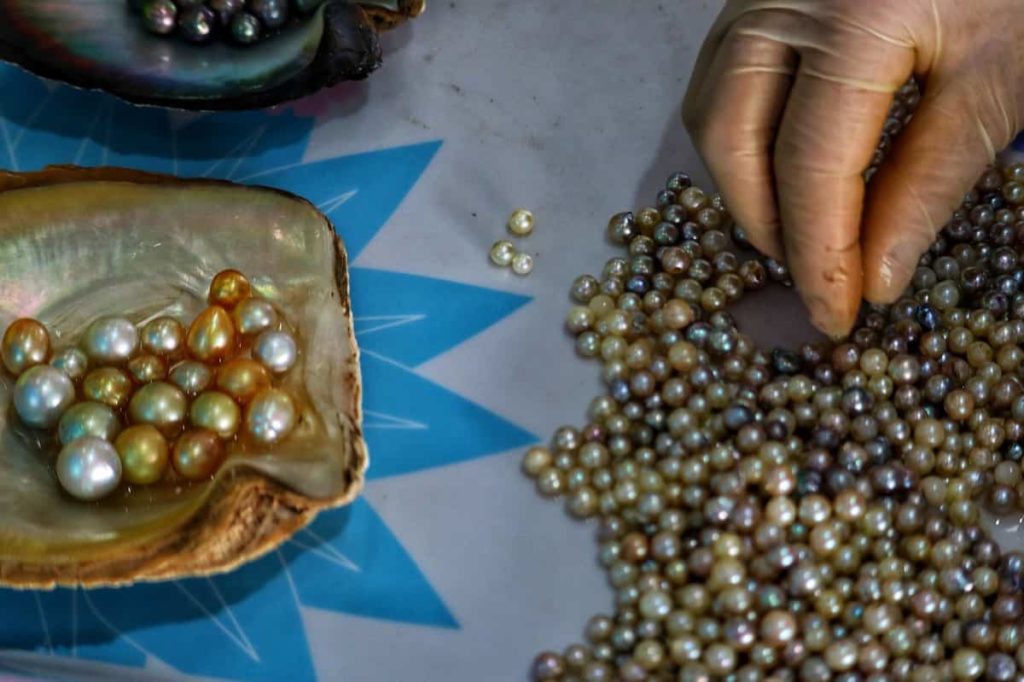
Ste by step process for commercial Pearl farming
Site selection
It is an important first step towards producing good Pearls. This site affects how well the Pearl shells grow, the quality of the Pearls, how safe the farm is from theft or vandalism, and how much it costs to run the farm. In addition, it is difficult to transfer the form after the establishment.
Set up the farm
Pearl farms only need a very simple structure. The farm structures in Pearl farming are Tahiti or Tahitian longlines, rafts, and underwater trestles. You can also use some of these combinations depending on your needs and location.
Preparing the Pearl oysters
Chaplets, lantern baskets, pocket nets, and floating or submerged trays are several ways to hold adult Pearl oysters.
Manage the farm
Growing Pearls is like growing any crop. So, you should take care of the farm frequently for the good growth of Pearl oysters and the production of high-quality Pearls. Check regularly for any damage, missing lines, and floats. You should clean the Pearl oysters from the fouling organisms that grow on their shells. Always handle the Pearl oysters gently while cleaning.
In case you miss this: Pearl Farming Information For Beginners
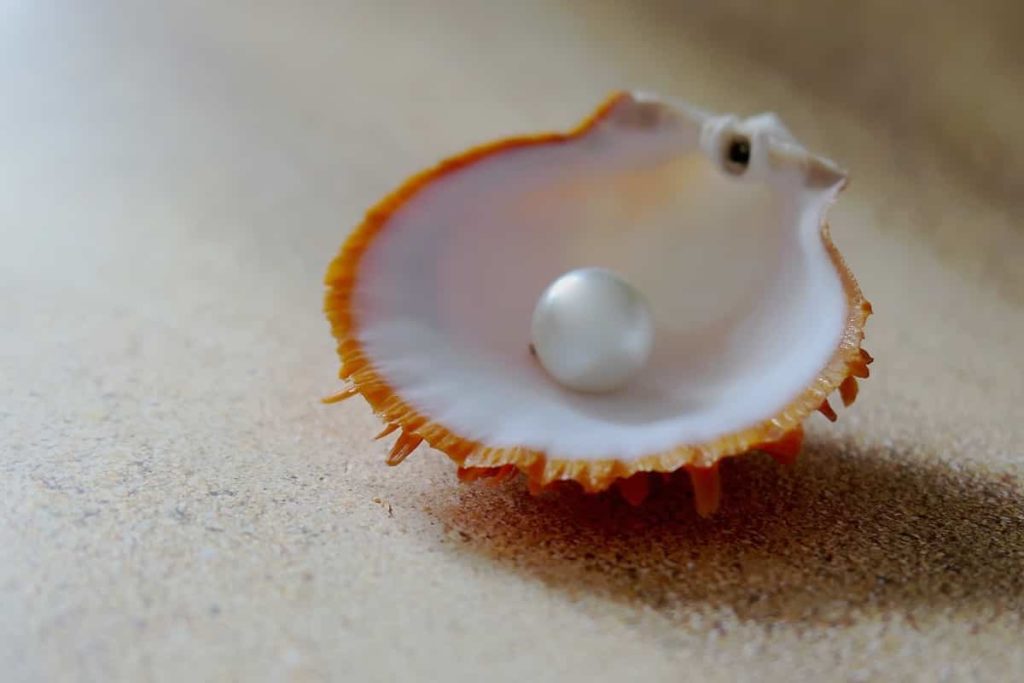
Grafting the Pearl oysters
The ideal size for a Pearl oyster size for grafting is about 4.5-6 inches (12-15 cm) in length. You can graft older and larger Pearls but are less likely to high-quality Pearl production. Also, you should clean the Pearl shells monthly before grafting. Cleaning keeps Pearl oysters healthy and in good condition.
Harvesting
Pearls should be harvested when the nacre layer is 0.08-0.12 inches thick. Don’t risk making Pearls with a thin nacre while trying to harvest early. You should keep the Pearls in a safe after harvesting. Wash the Pearls after harvesting. Lastly, keep a record of every grafting and harvesting of your Pearl farming business.
Ways pearl farming make you rich in a short time: Earn Rs 300,000 per month with 50% government subsidy
This is Pearl farming. For starting this business, you don’t have to spend a lot of money. Initially Rs. 25,000-30,000 is required. The government is providing a 50% subsidy and you can easily earn 300,000 in a month. In recent times, people’s interest in Pearl cultivation has increased rapidly.
Earn Rs. 300,000 by investing Rs. 30,000 – Two Pearls come out of the oyster. A good quality Pearl sells for more than 200 rupees while a simple Pearl sells for a minimum of 120 rupees. An oyster is made for 25 to 35 rupees. In such a case, if you put 25,000 shells in a pond of one acre, it will cost about Rs. 800,000. Bijendra said that even if 50% of oysters are lost in the process of preparation, an annual income of Rs 30 lakh can be easily earned.
In case you miss this: Top 20 Seed Companies in India
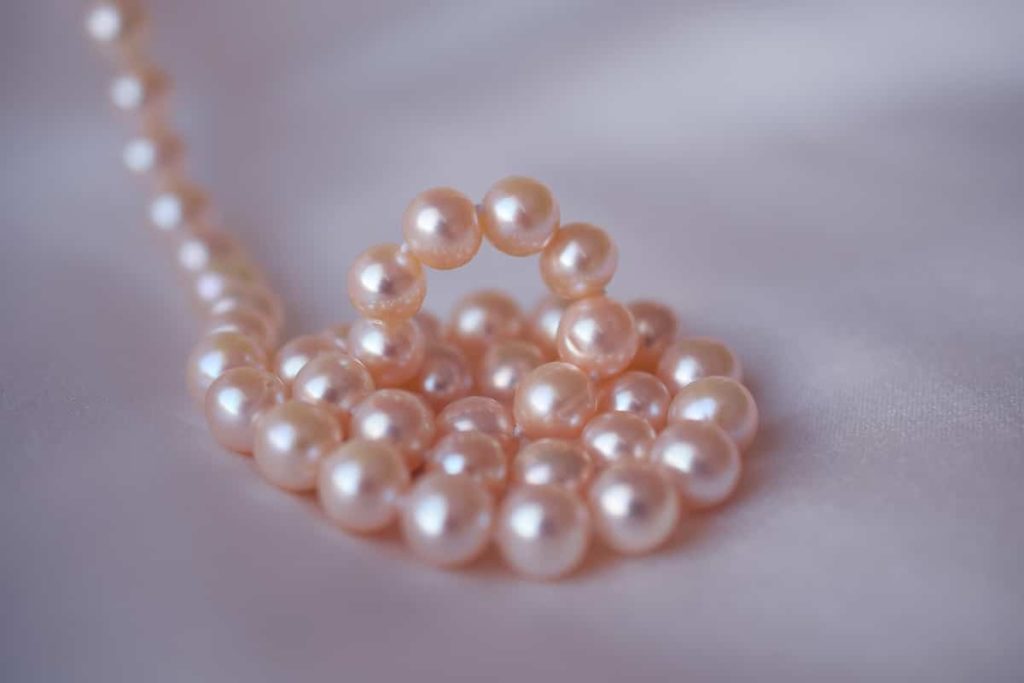
You can also start oyster farming from Rs 30,000 which can earn you up to Rs 300,000 per year. However, this does not include the cost of digging the pond, as it is done only once and it also gets a 50% subsidy from the government. Bijender is a farmer from Dhampur village in Uttar Pradesh’s Bijnor district, has started cultivating Pearls, earning an annual income of Rs 800,000.
- How to Make Houseplants Bushy: Effective Tips and Ideas
- Innovative Strategies for Boosting Coconut Pollination and Yield
- Pollination Strategies for Maximum Pumpkin Yield
- The Complete Guide to Chicken Fattening: Strategies for Maximum Growth
- Natural Solutions for Tulip Problems: 100% Effective Remedies for Leaf and Bulb-Related Issues
- Revolutionizing Citrus Preservation: Towards a Healthier, Greener Future
- Natural Solutions for Peony Leaf and Flower Problems: 100% Effective Remedies
- Maximizing Profits with Avocado Contract Farming in India: A Comprehensive Guide
- Natural Solutions for Hydrangea Problems: 100% Effective Remedies for Leaf and Flowers
- The Ultimate Guide to Choosing the Perfect Foliage Friend: Bringing Life Indoors
- From Sunlight to Sustainability: 15 Ways to Use Solar Technology in Agriculture
- The Ultimate Guide to Dong Tao Chicken: Exploring from History to Raising
- The Eco-Friendly Makeover: How to Convert Your Unused Swimming Pool into a Fish Pond
- Mastering the Art of Delaware Chicken Farming: Essentials for Healthy Backyard Flocks
- 20 Best Homemade Fertilizers for Money Plant: DIY Recipes and Application Methods
- How to Craft a Comprehensive Free-Range Chicken Farming Business Plan
- Brighten Your Flock: Raising Easter Egger Chickens for Beauty and Bounty
- How to Optimize Your Poultry Egg Farm Business Plan with These Strategies
- Subsidy for Spirulina Cultivation: How Indian Government Schemes Encouraging Spirulina Farmers
- Ultimate Guide to Raising Dominique Chickens: Breeding, Feeding, Egg-Production, and Care
- Mastering the Art of Raising Jersey Giant Chickens: Care, Feeding, and More
- Ultimate Guide to Raising Legbar Chickens: Breeding, Farming Practices, Diet, Egg-Production
- How to Raise Welsummer Chickens: A Comprehensive Guide for Beginners
- How to Protect Indoor Plants in Winter: A Comprehensive Guide
- Ultimate Guide to Grow Bag Gardening: Tips, Tricks, and Planting Ideas for Urban Gardeners
- Guide to Lotus Cultivation: How to Propagate, Plant, Grow, Care, Cost, and Profit
- Agriculture Drone Subsidy Scheme: Government Kisan Subsidy, License, and How to Apply Online
- Ultimate Guide to Raising Araucana Chickens: Breed Profile, Farming Economics, Diet, and Care
- Bringing Hydroponics to Classroom: Importance, Benefits of Learning for School Students
- Ultimate Guide to Raising Polish Chickens: Breed Profile, Farming Economics, Diet, and Care
- Ultimate Guide to Raising Australorp Chickens: Profile, Farming Economics, Egg Production, Diet, and Care
- Silkie Chicken Farming: Raising Practices, Varieties, Egg Production, Diet, and Care
- Sussex Chicken Farming: Raising Practices, Varieties, Egg Production, Diet and Care
- Homemade Feed Formulations for Livestock: Discover Cost-effective Starter to Finisher Feed Recipes
- 20 Best Pig Weight Gain Supplements: Top Swine Weight Gain Formulas
- Ultimate Guide to Elderberry Farming: Propagation, Planting, Yield, Cost, and Profit